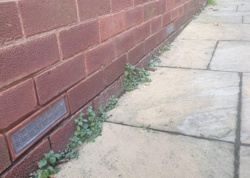News
I have mice in my house should I be worried?

The house mouse is a small, slender rodent with a slightly pointed nose, small, black protruding eyes and a nearly hairless tail with scale rings. Mice are considered the most troublesome and economically damaging rodent pests in Britain.
Adult mIce can weigh up to 1 ounce and are generally greyish brown in colour. The house mouse is very adaptable and will live happily alongside humans. This gives it the name of "commensal" rodents, brown rats are also in this group. House mice are more common in residences and commercial structures than rats. Next to humans, they are regarded to be the most common mammal residing in UK homes.
Mice can squeeze through the smallest of gaps, as a rule of thumb if you can fit a pen in a hole a mouse can also get through. Mice live in and around homes, farms, commercial establishments, in open fields and agricultural land. At times they may live a long distance away from humans, particularly where climates are moderate.
House mice will eat many different types of food but they prefer seeds and grain. They will not hesitate to try new foods and they are considered "nibblers" sampling many kinds of items that may be present in their environment. They may prefer foods which are high in fat, protein, or sugar even when grain and seed are available. Such items include sweets, bacon and butter.
The female can have between 5 to 10 litters of mice in one year, due to this mouse populations grow rapidly under good conditions. Studies have shown that during its daily activities, a mouse normally travels an area of around 10 to 30 feet in diameter. Mice rarely travel further than this to obtain food or water.
When house mice live in or around buildings, they almost always cause some degree of economic damage. In homes and commercial buildings, they will feed on various stored food items or pet foods, nibbling through the packaging to get at the food. In addition, they will contaminate foods with their urine, droppings and hair.


